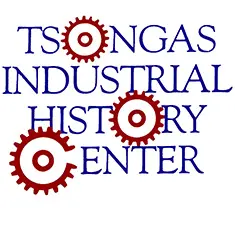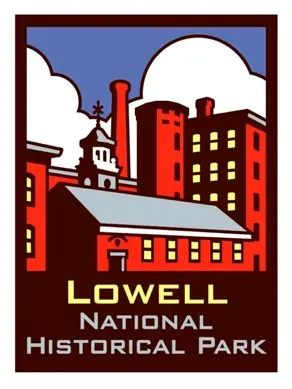All of our programs have been reviewed to ensure their relevance to state and national standards. (SeeEducation Programdescriptions.)
State Curriculum Frameworks
Massachusetts
Grade 4 – Social Studies
- Topic 4 – The expansion of the United States over time and its regions today – The Northeast
- 4. Develop questions, conduct research, and analyze how people have adapted to the environment of the Northeast, and how physical features and natural resources affected settlement patterns, the growth of major urban/suburban areas, industries or trade.
- 5. Describe the diverse cultural nature of the region, including contributions … the English in Massachusetts, Rhode Island, Connecticut, Vermont and New Hampshire, subsequent 19th and early 20th century immigration by groups such as Irish, Italian, Portuguese, and Eastern Europeans) and various other immigrant groups from other regions of the world in the later 20th and 21st centuries (e.g., Puerto Ricans, Dominicans, Mexicans, Salvadorans, Colombians, Guatemalans, Brazilians, Haitians, Vietnamese, Cambodians, Chinese, Indians, and Somalis).
Grade 4 – Speaking and Listening Standards, Comprehension and Collaboration
- 1. Engage effectively in a range of collaborative discussions (one-on-one, in groups, and teacher-led) with diverse partners on grade 4 topics and texts, building on others’ ideas and expressing their own clearly.
- b. Follow agreed-upon rules for discussions and carry out assigned roles.
- c. Pose and respond to specific questions to clarify or follow up on information and make comments that contribute to the discussion and link to the remarks of others.
- d. Review the key ideas expressed and explain their own ideas and understanding in light of the discussion.
High School – U.S. History I
- Topic 3. Economic growth in the North, South, and West
- 2. Analyze the effects of industrial growth throughout antebellum America, and in New England, the growth of the textile and machinery industries and maritime commerce.
- c. the causes and impact of the wave of immigration from Northern Europe to the United States in the 1840s and 1850s (e.g., the impact of the English occupation of Ireland, the Irish famine, and industrial development in the U.S.)
- e. the role of women as the primary workforce in New England textile factories and female workers’ activism in advocating for reform of working conditions
- 2. Analyze the effects of industrial growth throughout antebellum America, and in New England, the growth of the textile and machinery industries and maritime commerce.
NEW HAMPSHIRE
Grade 3-4 – Geography
- SS:GE:4:2.4: Illustrate the ways in which regions change, e.g., changes in local neighborhoods or changes in the United States through westward expansion. (Themes: C: People, Places, and Environment, E: Cultural Developments, Interactions, and Change, I: Patterns of Social and Political Interactions
- SS:GE:4:4.2: Describe the types of historical patterns of human migration, e.g., chain migration or slave migration Themes: C: People, Places, and Environment, I: Patterns of Social and Political Interaction)
- SS:GE:4:4.3: Evaluate the effects of migration on the characteristics of place, e.g., cultural awareness of food choices. (Themes: E: Cultural Development, Interaction, and Change)
Grade 3-4 – US/NH History
- SS:HI:4:3.3: Explore how groups have enhanced the art, music, and literature of our nation, e.g., Latinos or Franco Americans. (Themes: E: Cultural Development, Interaction, and Change F: Global Transformation, J: Human Expression and Communication)
- SS:HI:4:5.1: Explain the unique contributions of different ethnic and religious groups to New Hampshire history and culture, e.g., the Shakers or the French Canadians. ( Themes: E: Cultural Development, Interaction, and Change J: Human Expression and Communication I: Patterns of Social and Political Interaction)
- SS:HI:4:5.3: Trace the changes in the roles and lives of women and children and their impact on society, e.g., the family or workplace. (B: Civic Ideals, Practices, and Engagement, I: Patterns of Social and Political Interaction)
- SS:HI:4:5.4: Explore attitudes towards diversity, e.g., segregation or inclusion. (Themes: E: Cultural Development, Interaction, and Change I: Patterns of Social and Political Interaction)
- SS:HI:4:5.5: Describe the reasons why various groups have come to the United States, e.g., enslavement or economic opportunity. (C: People, Places, and Environment, F: Global Transformation, H: Individual, Equality, and Authority)
Grade 3-4 – World History
- SS:WH:4:5.1: Describe different ways that societies around the world express their values and beliefs through practice, e.g., festivals and dress. (B: Civic Ideals, Practices, and Engagement, I: Patterns of Social and Political Interaction)
Common Core State Standards
Speaking and Listening Standards K-5
- Grade 4:1: Engage effectively in a range of collaborative discussions (one-on-one, in groups, and teacher-led) with diverse partners on grade 4 topics and text, building on others’ ideas and expressing own clearly.
- C: Pose and respond to specific questions to clarify or follow up on information, and make comments that contribute to the discussion and link to the remarks of others.
- D: Review key ideas expressed and explain their own ideas and understanding in light of the discussion


